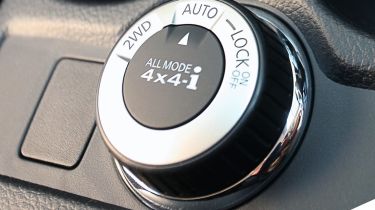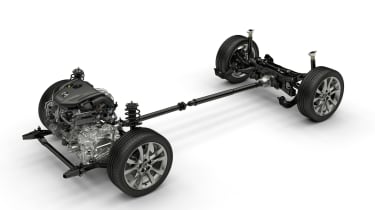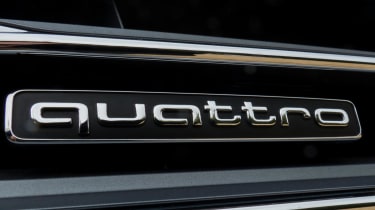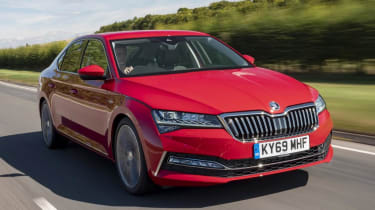Should your next car be four-wheel drive, rear-wheel drive or front-wheel drive?
Which wheels are powered by a car’s engine can seriously change the way it drives; our guide explains all

There are three main ways a car can be propelled by its engine or motor: by the front wheels (front-wheel drive), the rear wheels (rear-wheel drive) or all four wheels (four-wheel drive or all-wheel drive).
While older cars were usually rear-wheel drive because this was simpler to engineer and package inside a car, front-wheel drive is now the norm. Manufacturers such as Ford and Vauxhall switched over completely and now have mostly front-wheel drive cars rather than rear-wheel drive. However, some makers have stuck to their roots, such as BMW and Mercedes (although the 1 Series and A-Class prove that they can also make front-wheel-drive cars). These brands also offer BMW xDrive and Mercedes 4MATIC four-wheel-drive systems on certain of their respective models.
 Manual or automatic gearbox – which is best?
Manual or automatic gearbox – which is best?
When you’re just nipping to the shops, even the most seasoned drivers might not be able to tell whether the car they are in is being driven by the front, rear or all four wheels. It’s only under certain conditions that this becomes obvious, such as if the tyres lose their grip on the road.
There are advantages and disadvantages for each type of drive, and it’s not just about traction. In fact, a big part of why auto makers build each type of car is down to manufacturing, costs and design considerations, rather than because it offers a certain driving experience.
In this article you can read more about all the main differences between front-, rear-, and four-wheel-drive cars, which should help you decide what to choose for your next model. However, if you’re in doubt and feel you are happy with your current car’s configuration, there’s no reason to change – all three are equally valid.
Four-wheel drive

As the name suggests, in a four-wheel-drive vehicle the engine turns all the wheels. This significantly increases the amount of grip a car can have, because power goes to the four corners of the vehicle rather than just two. Many SUVs and all serious off-roaders come with four-wheel drive, as these vehicles are more likely to come across rough terrain, muddy fields and slippery lanes where extra grip is helpful, or even essential. If you want an SUV but don’t think you need four-wheel drive, there are plenty of options available. The Skoda Karoq, for example, is two-wheel drive by default, with four-wheel drive being a relatively rarely chosen option.
Many cars are also offered with four-wheel drive – usually as an option. Audi is one of the leaders in this field, and if you come across an Audi with a ‘quattro’ badge on its boot or bonnet, this means it’s a four-wheel-drive model.

Some manufacturers build more rugged versions of their standard cars, adding four-wheel drive and raising the suspension slightly to improve grip and ground clearance. The Audi A6 Allroad is an example of this approach.
While four-wheel drive improves grip and can also improve a car’s ability to go around corners quickly, it does have certain disadvantages. Firstly, it’s quite expensive to build, and this is reflected in the premium Audi charges (roughly £1,500) to add quattro four-wheel drive to its cars. Having four driven wheels adds weight, while powering all four wheels takes more energy than turning just two. This explains why four-wheel-drive cars tend to be less fuel efficient than their two-wheel-drive counterparts.
Four-wheel-drive cars are sometimes known as 4x4s, because they have four wheels (obviously) and all four receive power from the engine. You may also have heard the term all-wheel drive bandied about. It used to be the case that a car with four-wheel drive allowed you to switch between two and four-wheel-drive modes depending on road conditions, whereas an all-wheel-drive system permanently powered all wheels with no option to change to two-wheel-drive mode. The distinction between four- and all-wheel drive has now blurred somewhat, but if you want to be able to choose whether your car can be driven in two- or four-wheel-drive mode, look for the term ‘switchable’ four-wheel drive.
Rear-wheel drive
It might seem obvious, but in a rear-wheel-drive car, the engine powers the rear wheels only. Many driving enthusiasts prefer this set-up, because the front wheels only have to steer, rather than also handling power. As the rear wheels are powered, the vehicle is also ‘pushed’ from behind, rather than being ‘pulled’ from the front, and some feel this set-up makes a car more enjoyable to drive. Another advantage is that when accelerating, the weight of a vehicle is transferred to the back, giving greater grip to the driven wheels. It’s partly for this reason that more powerful cars tend to be rear-wheel drive or four-wheel drive.
Until the seventies and eighties, almost all cars were rear-wheel drive. While this set-up has certain advantages, it does require some compromises. Firstly, because there has to be a direct mechanical connection between the engine and the back wheels, most rear-wheel-drive cars have less room inside, because the floor needs to be raised in order to accommodate this link. This is usually evident in the shape of a ‘transmission tunnel’ – a bump in the middle of the floor, under which the connection to the rear wheels lies.
Rear-wheel-drive cars can also be trickier to handle in some circumstances. If you take a corner too quickly in a front-wheel-drive car, it’s likely to run wide, or ‘understeer’, and this can often be corrected simply by easing off the accelerator (but not lifting off completely, as this can introduce oversteer). Yet if you go too fast around a corner in a rear-wheel-drive car, the rear wheels can lose traction completely, making the car pivot or ‘oversteer’ around the front wheels like a pendulum. While this loss of control can be corrected, a certain amount of skill is required to do so. Rear-wheel-drive cars also tend to be trickier to drive in snow than their front-wheel-drive counterparts, which benefit from the weight of the engine pushing down on the driven wheels at slow speeds, improving traction on icy roads.
Front-wheel drive
Front-wheel-drive cars started to become popular around 40 years ago, and most smaller models now use this layout. Almost all hatchbacks are front-wheel drive, although there are some exceptions – the pure-electric Honda e will have a rear-wheel-drive layout. Front-wheel-drive vehicles tend to be easier to drive in certain situations, because taking a corner too fast is likely to lead to the car running wide (essentially not turning into the corner enough, or ‘understeering’) rather than the back end losing grip and pivoting. A car running wide can be often corrected by instinctively turning the steering wheel further into the corner, and many people prefer the perceived predictability this brings. As mentioned above, front-wheel-drive cars also tend to have better grip in icy and slippery conditions than their rear-wheel-drive counterparts.
Because there are no complicated mechanical components running underneath the body, front-wheel-drive cars often have more spacious interiors – although note that many front-wheel-drive cars can be specified with four-wheel drive, so car makers build in a space-hogging transmission tunnel as standard to accommodate this option. An example of this is the front-wheel-drive Skoda Superb, which can be ordered as a four-wheel-drive model. The original Mini was fundamental in drawing attention to the advantages a front-wheel-drive set-up can bring, because its clever packaging made transporting four adults in a small car possible.

Front-wheel-drive cars also tend to be cheaper, because manufacturers don’t have to make the extra mechanical components required to send the engine’s power all the way to the rear of the car. This also means they tend to be a little lighter, improving fuel economy.
It’s not all good news, though. Many enthusiasts feel that because the front wheels are being asked to steer the car as well as provide power, the driving experience is somewhat dulled. This is usually evident in the amount of ‘feel’ that comes through the steering wheel, an area where rear-wheel-drive cars are considered to hold an advantage. The idea that the car is being ‘pulled’ by the front wheels rather than ‘pushed’ by the rears is another area of compromise. If you think about how much easier a shopping trolley is to control when being pushed, rather than pulled, it’s easy to see why some people prefer a rear-wheel-drive set-up.
Finally, there’s a limit to how much power a front-wheel-drive car can handle. Because the front wheels are constantly changing angle as you steer, the amount of grip they can offer also changes, depending on whether or not you’re travelling in a straight line. The upper power limit for front-wheel-drive cars used to be around 250bhp, but sophisticated engineering and electronic systems mean some performance-orientated front-wheel-drive cars (such as the Honda Civic Type R) can handle over 300bhp.
Whichever set-up you prefer, knowing the advantages and disadvantages of each can help you make the right decision when choosing your next car. Before you go hunting for your latest purchase, be sure to check out our tips on how to test drive a new car.
Do you want to know more about four-wheel drive, all-wheel drive and 4x4? Read our full explainer for everything you need to know.
Most Popular

Suzuki’s new 10-year warranty is free – here’s how to get it
Tips & advice

Car dashboard warning lights: what does each symbol mean?

Electric car charging stations: public networks, charger types, apps and maps








